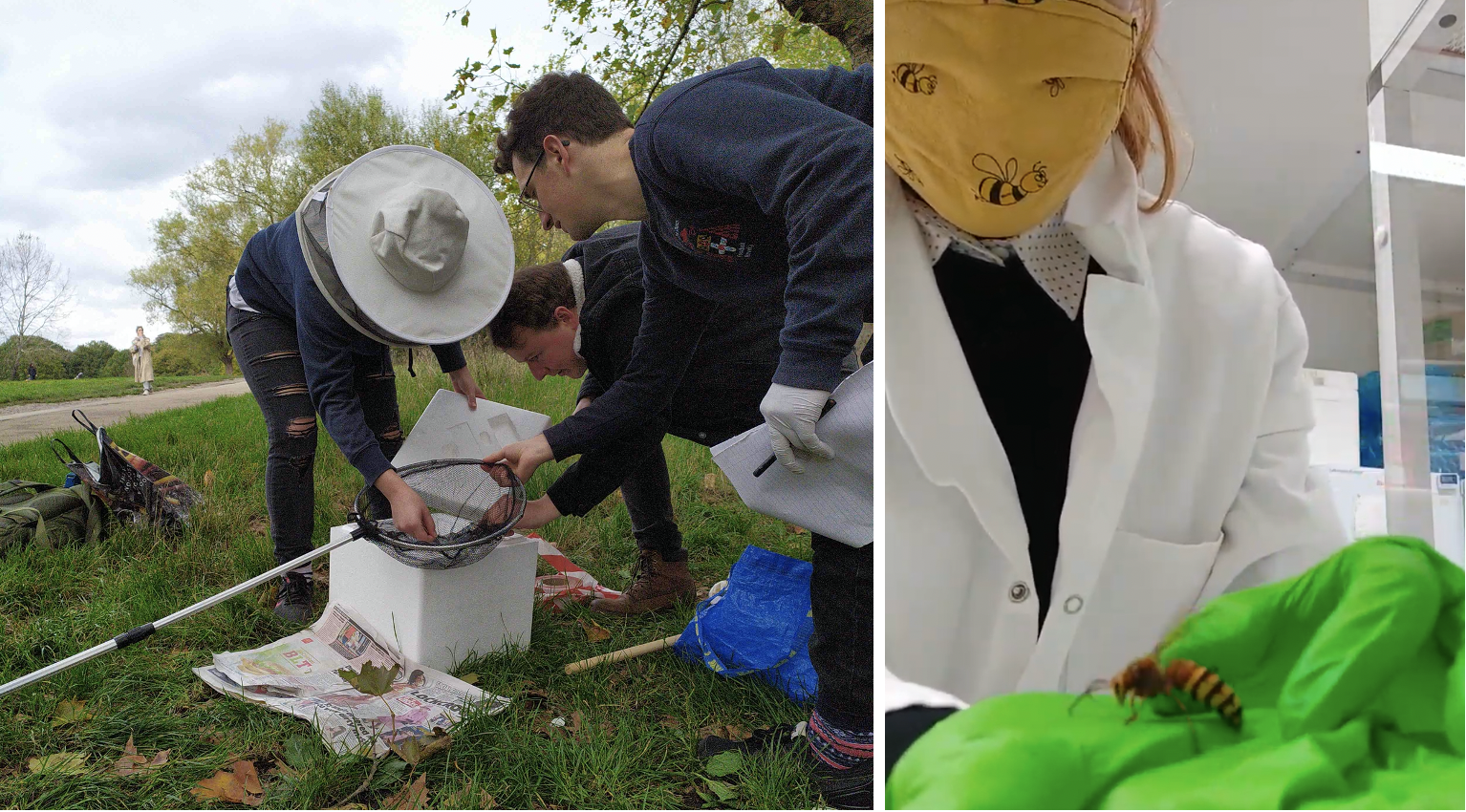Sampling hornets
I have been celebrating one-year of postdoc-ing with Seirian Sumner’s lab with a fieldtrip to observe and collect European hornets (Vespa crabro) with PhD students Lewis and Owen, MSci student Iona, and Hornet expert John.

October 2020 in London park and lab
The nest was busy with workers and (at least) one male going in and out of the tree hole. At this time of the year, the reproductive queen has often died and the workers are left without a nursery job (read more here). The workers go out to forage, and it is becoming more and more difficult to find sugar and protein in the urban park in October.
We soon settled in a chain of sampling tasks. John catches the worker in the net, Iona keeps it still on dry ice, Lewis and Owen secure the sample into liquid nitrogen. Meanwhile I try to keep the public away from the sampling site by answering queries (“are those bees?”, “Are these native?”) and encouraging the scientific curiosity (“did you know that some rare species live in hornet nests? Think about the biodiversity”).
At the end of the session, we got all samples secured. We packed our kits and left some strawberry jam for the late workers: a bit of sugar and protein goes a long way for these soon-to-die workers.
Back in the lab, I was also able to handle a live male hornet (they do not sting), which was amazing as I had only seen specimens on a pin at the NHM.